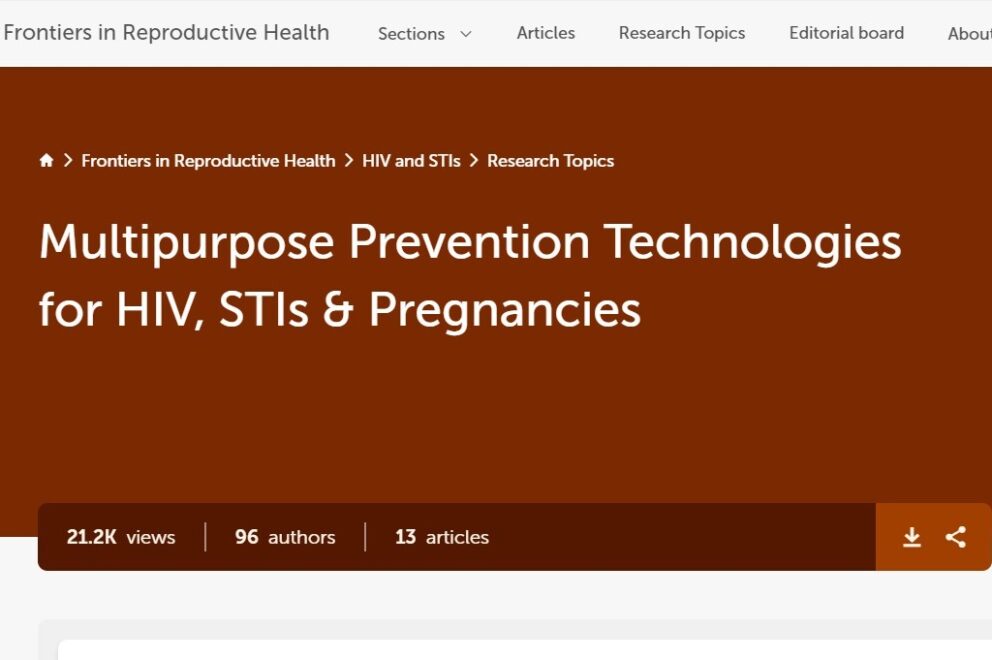Back to Resource Library
Frontiers in Reproductive Health Special Issue: Multipurpose Prevention Technologies

This special issue of Frontiers in Reproductive Health contains the latest research and insights on Multipurpose Prevention Technologies (MPTs), products designed to address two or more health concerns, including prevention of HIV, sexually transmitted infections, and pregnancy. Articles include:
- Editorial: Multipurpose prevention technologies for HIV, STIs and pregnancies
- Turning the promise of multipurpose prevention technologies into a market reality: a commentary
- Tenofovir vaginal film as a potential MPT product against HIV-1 and HSV-2 acquisition: formulation development and preclinical assessment in non-human primates
- Participant experiences with a multipurpose vaginal ring for HIV and pregnancy prevention during a phase 1 clinical trial: learning from users to improve acceptability
- Strategic actions to advance multipurpose prevention technologies in low- and middle-income countries
- Randomized controlled phase IIa clinical trial of safety, pharmacokinetics and pharmacodynamics of tenofovir and tenofovir plus levonorgestrel releasing intravaginal rings used by women in Kenya
- Commentary: Multipurpose prevention technologies—What about sexually transmitted infections?
- Synthesis of end-user research to inform future multipurpose prevention technologies in sub-Saharan Africa: a scoping review
- Optimizing the pipeline of multipurpose prevention technologies: opportunities across women’s reproductive lifespans
- Equipping providers to offer novel MPTs: Developing counseling messages for the Dual Prevention Pill in clinical studies and beyond
- Cost-effectiveness of the dual prevention pill for contraception and HIV pre-exposure prophylaxis
- Microarray patch for HIV prevention and as a multipurpose prevention technology to prevent HIV and unplanned pregnancy: an assessment of potential acceptability, usability, and programmatic fit in Kenya
- Preferred product attributes of a multipurpose vaginal ring: Findings from a phase 1 trial